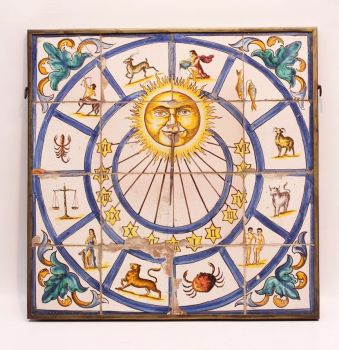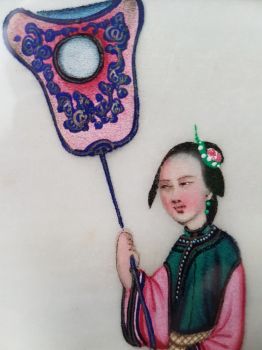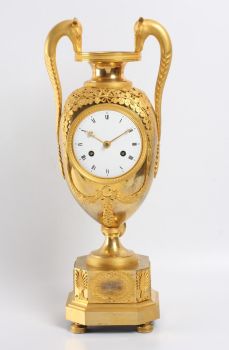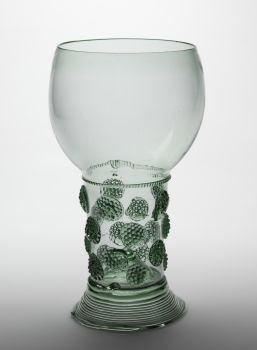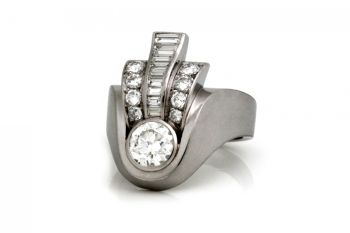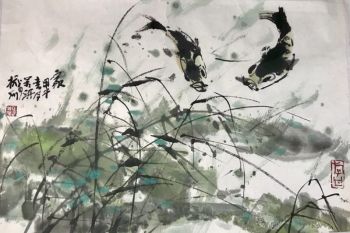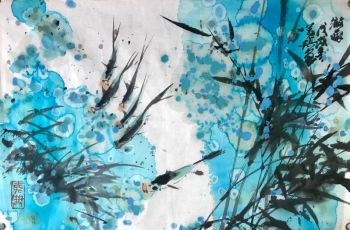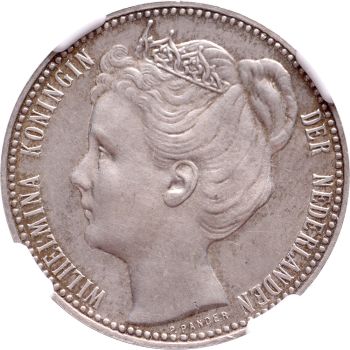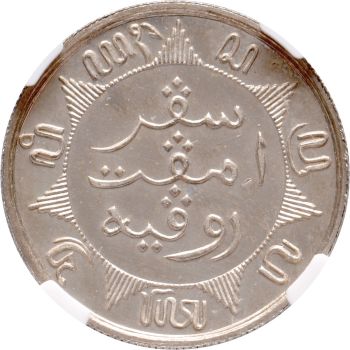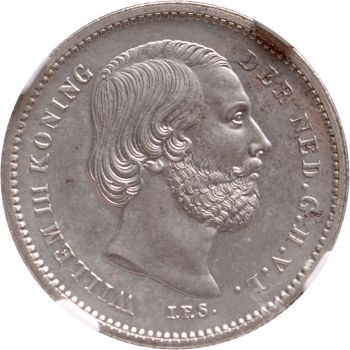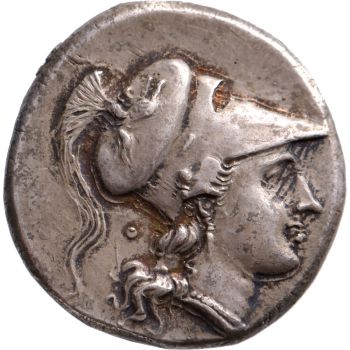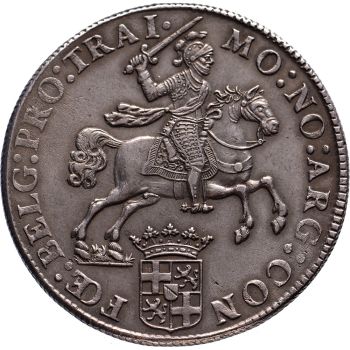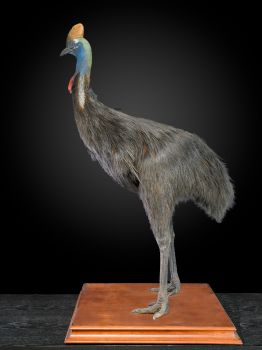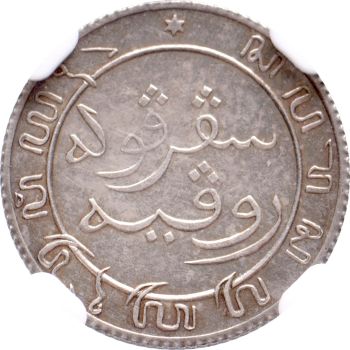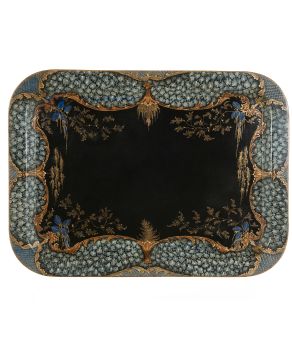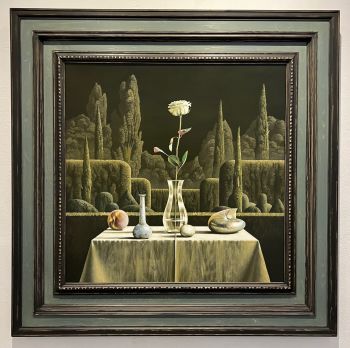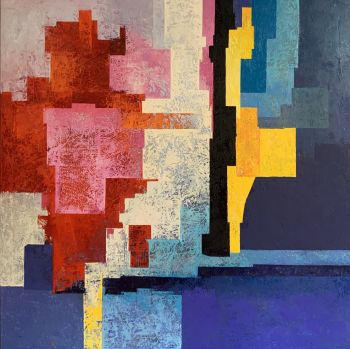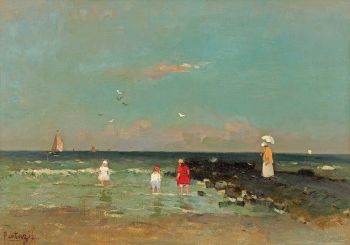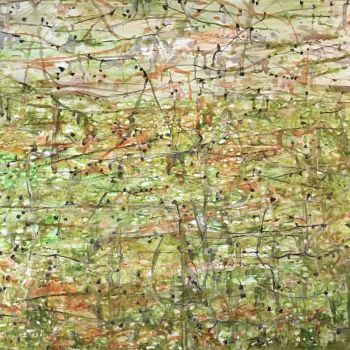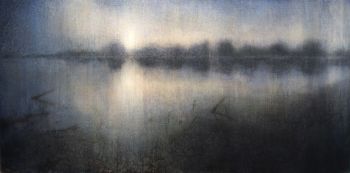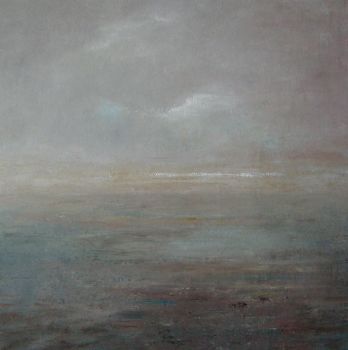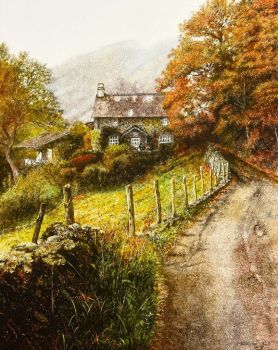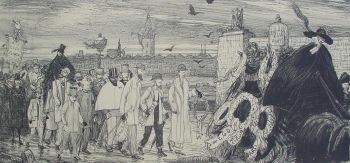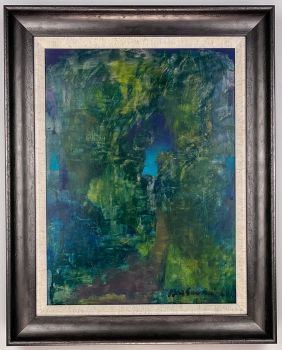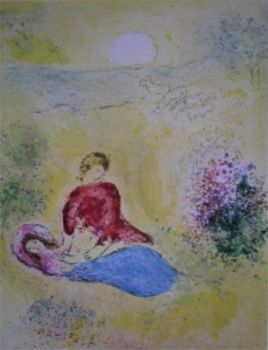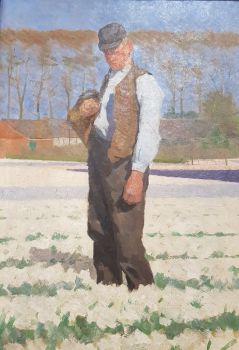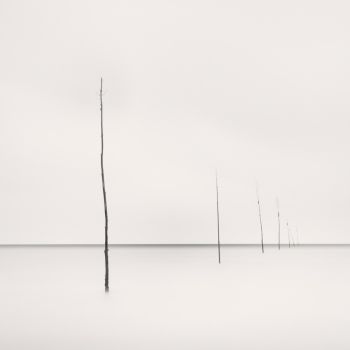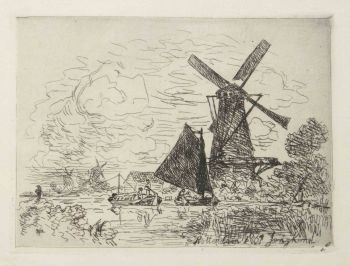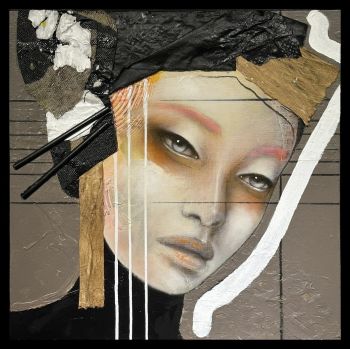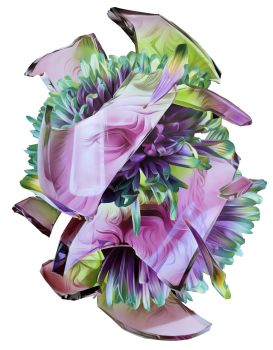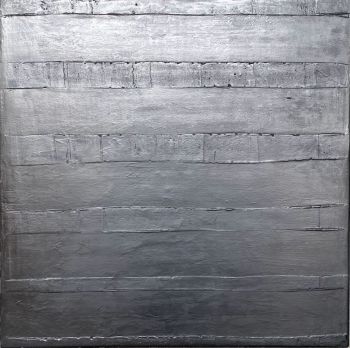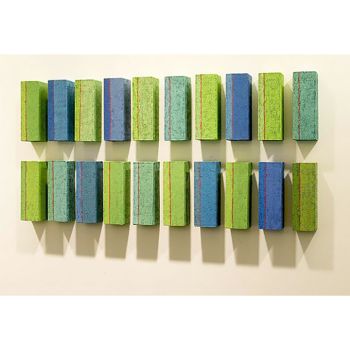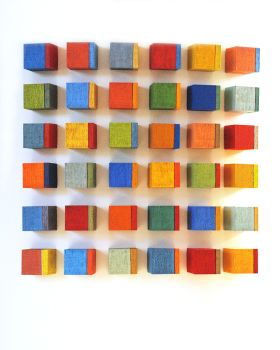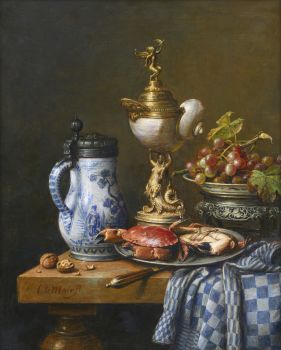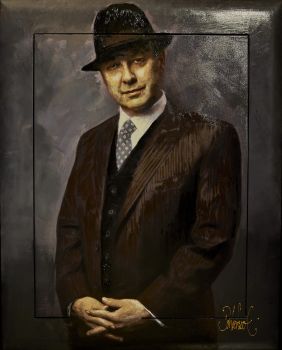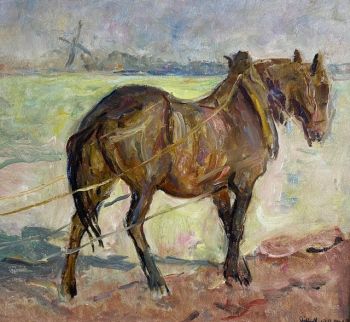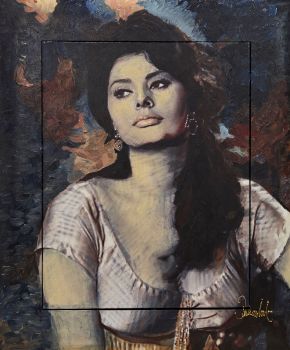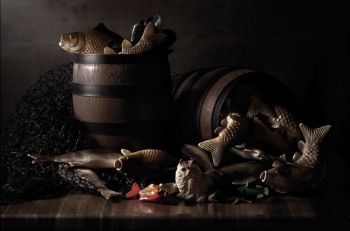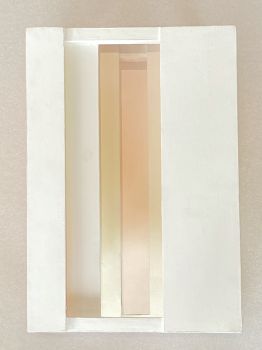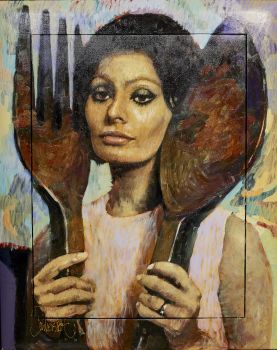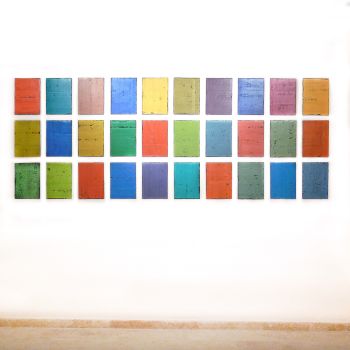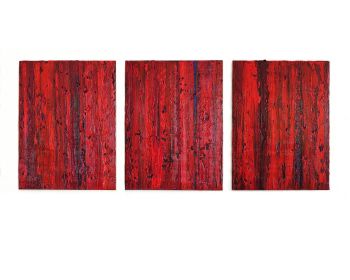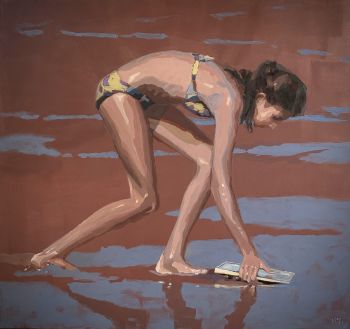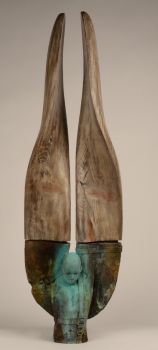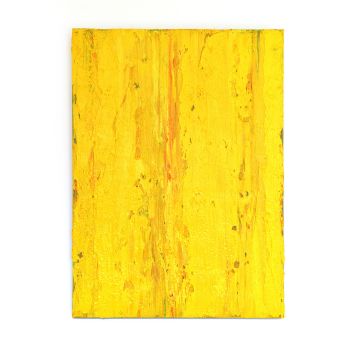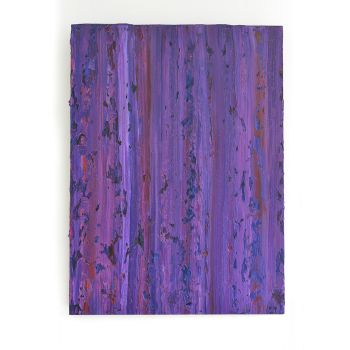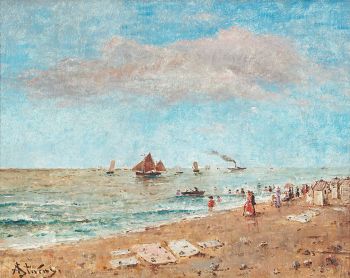Pair of Japanese Lacquered Plates 1700 - 1710
Unbekannter Künstler
HolzLack
ø 27 cm
Derzeit nicht über Gallerease verfügbar
- Über KunstwerkThese plates probably were part of a laquer service of the kind that was made to order in the early 18th century for the European market.
The shape of the plate with the typical low wide rim with a slightly raise edge is derived from the model of a Dutch pewter diner plate.
The decoration of the center plane is slightly tactile (Maki-technique) en depicts an Oriental landscape with buildings and trees.
The decoration of the rim consists of ‘Karakusa-motives’ and stylized Chrysanthemums (Kiku-motive). The difference in the lacquer of the two plates is remarkable and suggests the work of different artists, both with their own interpretation of the motives.
After the large commissions for lacquer furniture by the Dutch in the 17th century the interest for these large objects faded, arguably due to the high cost. The interest for lacquer artifacts, however, continued but it shifted to objects like plates, bowls, mugs, teapots and coffeepots. Because of the ample demand for tableware from 1700 onwards, the artists turned to ‘serial production’ of these types of objects for foreign markets. Tableware was typically decorated with similar decorations. The decorations were akin to the “Pictorial style” of the late 17th century, though simpler and, until about 1785, always with Oriental motives.
This Japanese lacquer tableware competed in the highest segments of the European market with porcelain. The Oriental lacquer objects were seen as the more rare and desirable, thus enhancing the status of the owner.
The motives:
When the demand for lacquer tableware increased in the early 18th century the artists based their decorations mainly on designs found on Arita porcelain; Landscapes with houses and trees, flowery sprigs (Karakusa) and flowermotives like Chrysanthemum (Kiku).
The technique:
Sometimes copper was used as base for lacquer work, like in plaques, but wood was most commonly used to work with. For furniture Hinoki (Cypress) and sometimes Sugi (Cryptomeria Japonica) was the usual choice. Turned wooden objects like plates and bowls were commonly made of Kaeki (Zelkova serrate, a type of elm), because it can be made very thin and light. A Kaeki bowl before it is lacquered weighs no more than 8 grams. The objects are varnished with many coats of the concentrated resin of the varnish tree (Rhus verniciflua). After every coat of varnish the object is dried in a dust free room with a humidity of more than 80% and subsequently polished.
Relief is achieved by mixing lime into the first layers of varnish on those places that need to be raised. The color is provided by pigments. The technique were gold dust or foil is applied to the still wet lacquer is called Makie. The gold more or less sinks into the layer of lacquer and is polished once the object has dried. The work is finished with a transparent coat of varnish that again is polished to a shine. To emphasize the gold decorations, they were applied to hiramakie (bas relief) and even to takamakie (raised relief). For the Dutch export market the decorations were mainly applied to black backgrounds.
The “Pictorial style” in Japanese lacquer work is applied from roughly 1630 onwards. Starting from about 1650 the style develops; the double edged cartouches surrounding the depictions gradually disappear. Around 1680 the style has matured to the point, where the images appear unframed on the objects. Most of these objects are made in Makie technique with gold on black. - Über Künstler
Es kann vorkommen, dass ein Künstler oder Hersteller unbekannt ist.
Bei einigen Werken ist nicht zu bestimmen, von wem sie hergestellt wurden, oder sie wurden von (einer Gruppe von) Handwerkern hergestellt. Beispiele sind Statuen aus der Antike, Möbel, Spiegel oder Signaturen, die nicht klar oder lesbar sind, aber auch einige Werke sind überhaupt nicht signiert.
Außerdem finden Sie folgende Beschreibung:
•"Zugeschrieben …." Ihrer Meinung nach wohl zumindest teilweise ein Werk des Künstlers
•„Atelier von ….“ oder „Werkstatt von“ Ihrer Meinung nach eine Arbeit, die im Atelier oder in der Werkstatt des Künstlers, möglicherweise unter seiner Aufsicht, ausgeführt wurde
•„Kreis von ….“ Ihrer Meinung nach ein Werk aus der Zeit des Künstlers, das seinen Einfluss zeigt, eng mit dem Künstler verbunden, aber nicht unbedingt sein Schüler
•"Art von …." oder „Anhänger von ….“ Ihrer Meinung nach eine Arbeit, die im Stil des Künstlers ausgeführt wurde, aber nicht unbedingt von einem Schüler; kann zeitgenössisch oder fast zeitgenössisch sein
•„Art von ….“ Ihrer Meinung nach ein Werk im Stil des Künstlers, aber späteren Datums
•"Nach …." Ihrer Meinung nach eine Kopie (jegliches Datums) eines Werks des Künstlers
• „Unterzeichnet …“, „Datiert …“. oder „Beschriftet“ Ihrer Meinung nach wurde das Werk vom Künstler signiert/datiert/beschriftet. Das Hinzufügen eines Fragezeichens weist auf einen Zweifel hin
• „Mit Unterschrift …“, „Mit Datum …“, „Mit Aufschrift ….“ oder „Trägt Unterschrift/Datum/Beschriftung“ ihrer Meinung nach die Unterschrift/Datum/Beschriftung von jemand anderem als dem Künstler hinzugefügt wurde
Artwork details
Related artworks
- 1 - 4 / 12
- 1 - 4 / 6
- 1 - 4 / 24
- 1 - 4 / 24
Rene Rietmeyer
''Installation Miami-Beach 2006''2006
Preis auf AnfrageEuropean Cultural Centre Collection
Alfred Stevens
ZEEGEZICHT MET ZEILSCHEPEN, STOOMBOTEN EN FIGUREN1823 - 1906
Preis auf AnfrageGalerie Het Noorderlicht
1 - 4 / 24



